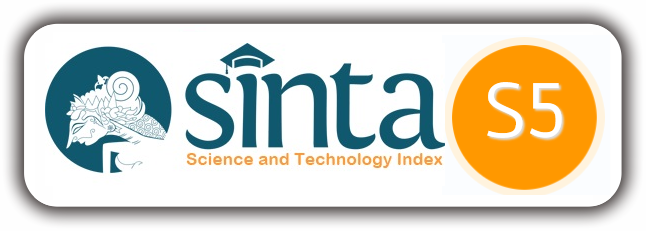Pemanfaatan Pestisida Nabati Ekstrak Daun Pepaya sebagai Pengendalian Ramah Lingkungan dalam Mendukung Ketahanan Pangan Berkelanjutan
DOI:
https://doi.org/10.59525/aij.v5i2.951Keywords:
Food Security; Home Garden; Botanical Pesticide; Papaya LeavesAbstract
This community service program addresses the critical role of food security in national development, acknowledging that agricultural productivity is often challenged by pests and diseases. While chemical pesticides are commonly used for pest control, their long-term application leads to negative environmental impacts, including increased pest resistance and harmful residues on food products. Therefore, there is a clear need for environmentally friendly, easy-to-use, and safe alternative pest control methods for household scale application. This initiative focuses on the potential of papaya leaf extract (Carica papaya L.) as a natural pesticide due to its bioactive compounds like papain, alkaloids, saponins, flavonoids, and tannins, which possess insecticidal and antimicrobial properties. The program employed a participatory educational approach in Dukuhmencek Village, involving community members, particularly active women farmers. Activities included socialization on the dangers of chemical pesticides and the benefits of natural alternatives, demonstrations of simple papaya leaf extract preparation, distribution of the natural pesticide, and guidance on its application in home gardens. Primary data was collected through interviews and observations to understand community perceptions, knowledge, and needs regarding eco-friendly pest control. The results showed that the application of papaya leaf extract effectively controlled pests like caterpillars and aphids, leading to healthier plants and reduced leaf damage. This successful implementation fostered community confidence in natural pesticides as a reliable, long-term solution, promoting environmental sustainability and reducing reliance on synthetic chemicals. The program not only enhanced technical skills but also contributed to community self-reliance and strengthened food security.
Downloads
References
Ariyanti, R., Yenie, E., & Elystia, S. (2017). Pembuatan Pestisida Nabati Dengan Cara Ekstraksi Daun Pepaya. Jom FTEKNIK, 4(02), 1–9.
Jujuaningsih, J., Rizal, K., Triyanto, Y., Lestari, W., & Harahap, D. A. (2021). Penggunaan Pestisida Nabati Ekstrak Daun Pepaya (Carica Papaya L.) pada Tanaman Kacang Panjang (Vigna Sinensis L.) untuk Mengurangi Dampak Pencemaran Lingkungan di Desa Gunung Selamat, Kec. Bilah Hulu, Kab. Labuhanbatu. Jurnal Pengabdian Magister Pendidikan IPA, 4(3). https://doi.org/10.29303/jpmpi.v4i3.857
Marian, O. N. (2024). Sosialisasi Pembuatan Pestisida Nabati Daun Pepaya Di Negeri Rumah Tiga Ambon. Pattimura Mengabdi : Jurnal Pengabdian Kepada Masyarakat, 2(1), 38–43. https://doi.org/10.30598/pattimura-mengabdi.2.1.38-43
Mulyandari, Retno Sri Hartati Ariani, M., & Hendayana, R. (2019). Aktualisasi Teknologi Inovatif Pemanafaatan Lahan Pekarangan. In Repository.Pertanian.Go.Id (Vol. 53, Issue 9). file:///C:/Users/User/Downloads/fvm939e.pdf
Ningrum, A. S., Adelia Regina Putri, Noor Rizkiyah, & Gideon Setyo Budiwitjaksono. (2023). Sosialisasi Pembuatan Pestisida Nabati Daun Pepaya pada KWT Turi Makmur Kota Blitar. INCOME: Indonesian Journal of Community Service and Engagement, 2(2), 141–148. https://doi.org/10.56855/income.v2i2.406
Rahmawati, R., Syarief, M., Jumiatun, F., & Djenal, F. (2019). Potensi Ekstrak Daun Sirsak (Annona muricata) Pada Pengendalian Hama Penghisap Polong (Riptortus linearis) Tanaman Kedelai. Agriprima : Journal of Applied Agricultural Sciences, 3(1), 22–29. https://doi.org/10.25047/agriprima.v3i1.130
Reni, C., Dedy, A., Ronal, A. W., & Patmasari, N. (2020). Ketahananpanganberkelanjutan. Jurnal Kependudukan Dan Pembangunan Lingkungan, 1(2), 23–32.
Reniwuryaan, S. (2024). Sosialisasi Pembuatan Pestisida Nabati Daun Pepaya Di Pt.Nisaina Group Kebun Wilaya Ii /Pt Mitra Usaha Maju Bersama Desa Latea. Pattimura Mengabdi : Jurnal Pengabdian Kepada Masyarakat, 2(1), 125–129. https://doi.org/10.30598/pattimura-mengabdi.2.1.125-129
Vandalisna, V., Mulyono, S., & Putra, B. (2021). Penerapan Teknologi Pestisida Nabati Daun Pepaya Untuk Pengendalian Hama Terung. Jurnal Agrisistem, 17(1), 56–64. https://doi.org/10.52625/j-agr.v17i1.194
Downloads
Published
How to Cite
Issue
Section
License
Copyright (c) 2025 Shaqila Mazaya Andira, Mirza Cahyo Wibowo, Savvy Prissy Amellia Carissa, Novia Wulan Safitri, Roudotul Murtafi’ah, Navisya Putri Jingga, Rindi Dewi Anjani, Novita Khoirunisak, Raditya Hermawan, Noval Ihsan Romadhon, Sampir Andrean Sukoco

This work is licensed under a Creative Commons Attribution 4.0 International License.








